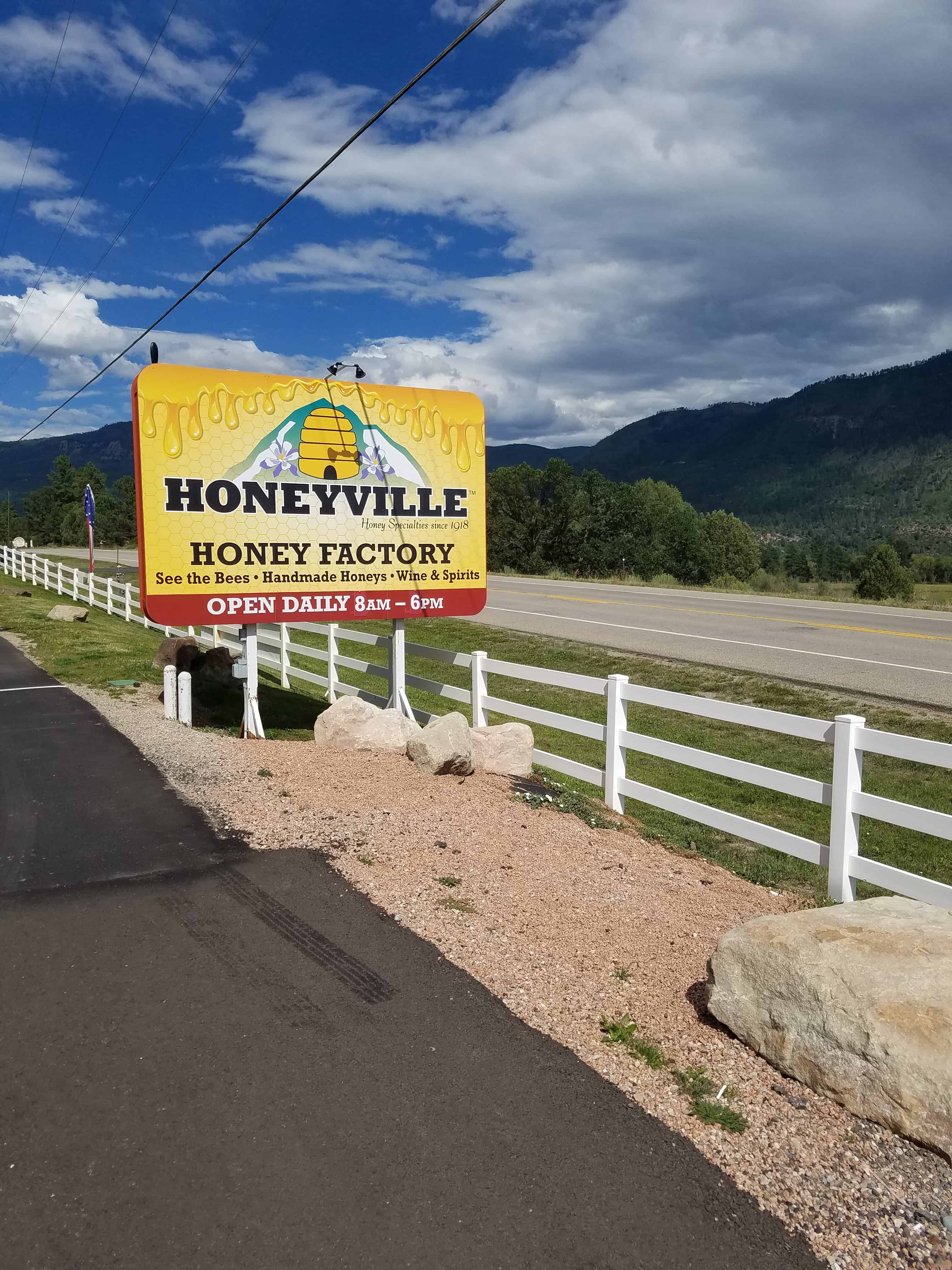While this letter is being written at home in Alabama, it could be titled “Letter from Colorado”. Mary and I spent August in Durango, Colorado, and not entirely by choice. Mary broke her leg there at the end of July, forcing her to spend August in rehab in Durango (with me staying there with Mary’s brother). On the plus side, if you must break a bone, Durango is a good place to do it, as the winter ski season attracts topnotch orthopedic talent to the area.
The extra time in Durango gave me some time to check out their local beekeeping scene. First off, they have a shop that is dedicated to bee products (Honeyville), and I’ve included a photograph of their road sign. The view from the shop is impressive, and equally impressive is the array of bee products they sell. They even make a distilled mead, and the still was made to look like a gigantic skep. Should you ever go to Durango, Honeyville is worth a visit.
I had a chat with Honeyville’s owner, and found out about the local Four Corners Beekeepers Association. (FYI: Four Corners refers to the nearby junction of Arizona, Colorado, New Mexico, and Utah.) They meet monthly, and as a guest I was greeted warmly by their president Tina Sebestyen. They are a good group.
In conversations, I told the Four Corners beekeepers a bit about South Alabama beekeeping, and of course they told me about beekeeping in their areas. Note that I refer to their ‘areas”. While we have a climate that is pretty much the same for all the local beekeepers, the local conditions vary considerably for Four Corners beekeepers. Some of the members keep their bees in the New Mexico desert, and some keep their bees in the Colorado mountains. Each area has its own challenges. As an example, while I can go into an Alabama colony and find brood in every month of the year, in the mountains bees go through a prolonged winter broodless period. I can overwinter a south Alabama colony on medium’s worth of stored honey (about 30 pounds), Colorado mountain colonies need about 60 pounds.
On the plus side, they don’t have hive beetle problems (their soil too dry for the beetles to pupate), but that is countered by their bear problems.
The meeting program was delivered by Bill Collins, who does bee research at the local Fort Lewis college. He talked about his work with Varroa. Bill is a fan of formic acid, as it kills both the emerged mites and the developing mites in the cells. When he used oxalic acid, he found he had to repeat treatments to get acceptable mite levels. Formic acid did the job in one application.
We drove back to back to South Alabama in early September, and my own battles with Varroa. I had put Apivar® (amitraz) strips in my colonies before we left for Durango, figuring that I would be back in time to pull them. Unfortunately, our return was delayed so the strips stayed in about three weeks longer than they should have. The result was that I pulled my strips on the day I made my Varroa counts for the Mite a thon, and as a consequence didn’t find any mites in my sugar roll tests. I then installed sticky boards in my colonies as an alternate test, and then I found mites – not enough to warrant action, but mites nevertheless. Conclusion: the sticky board test may be less precise than the sugar roll when determining mite loading, but as a detection test the sticky board is more likely to find mites.
And that’s the news for September. Later in the month I will be going to the Alabama Beekeepers Association’s annual meeting, and I’ll tell you about it in my October letter.
-Bill Miller

